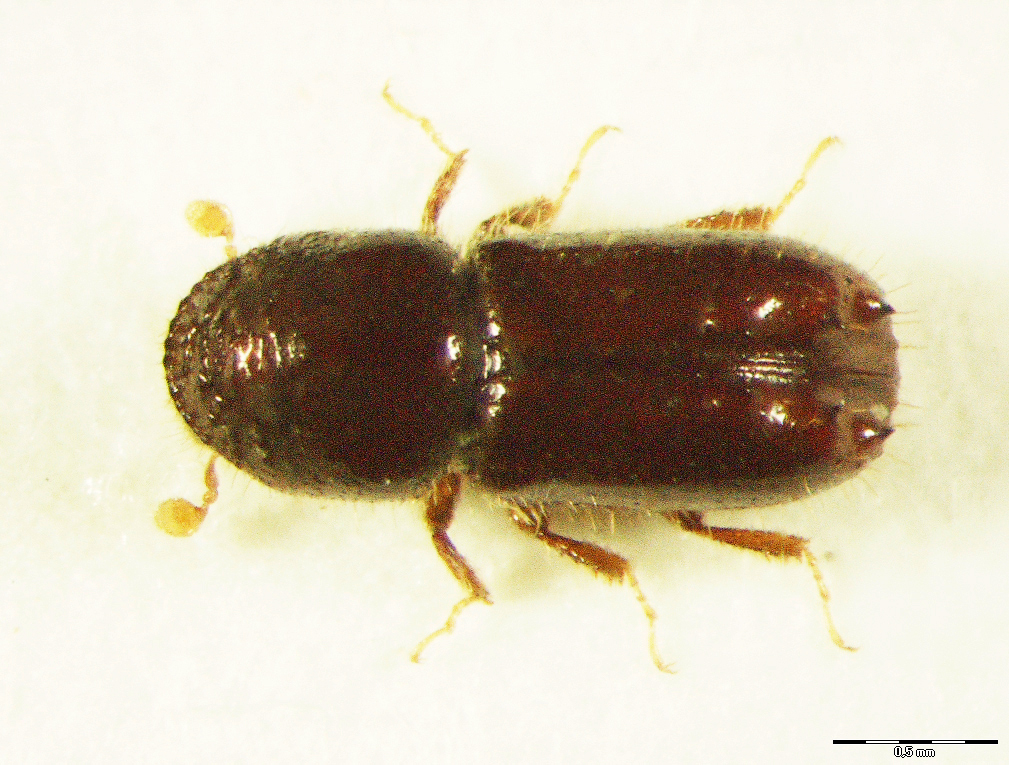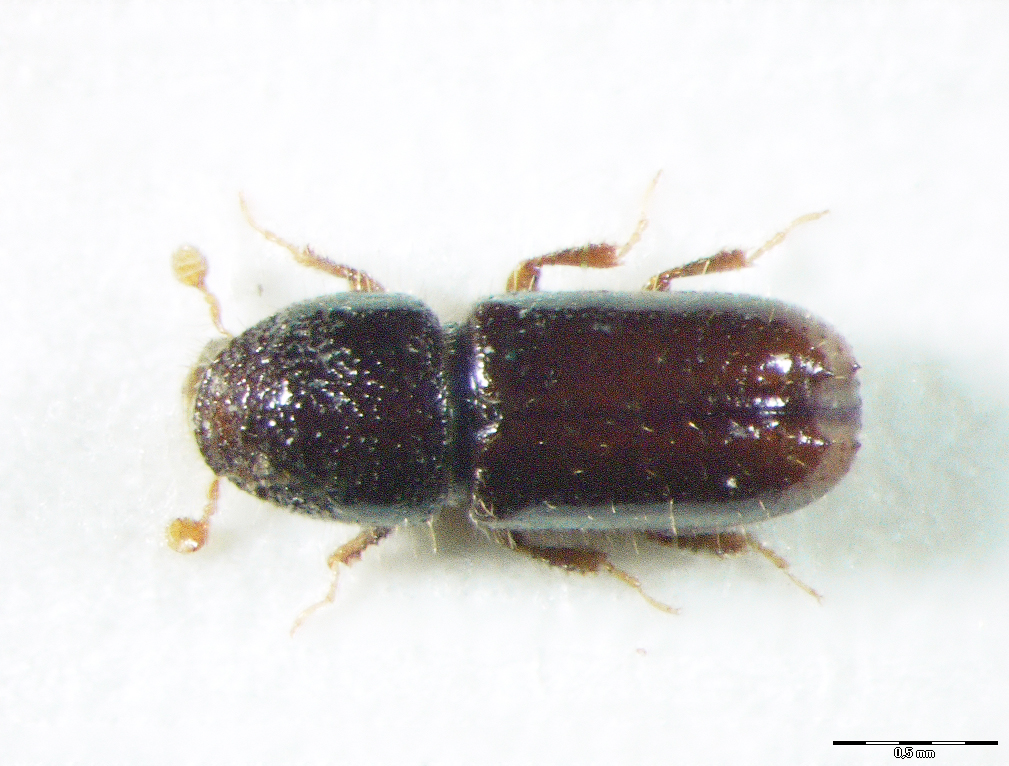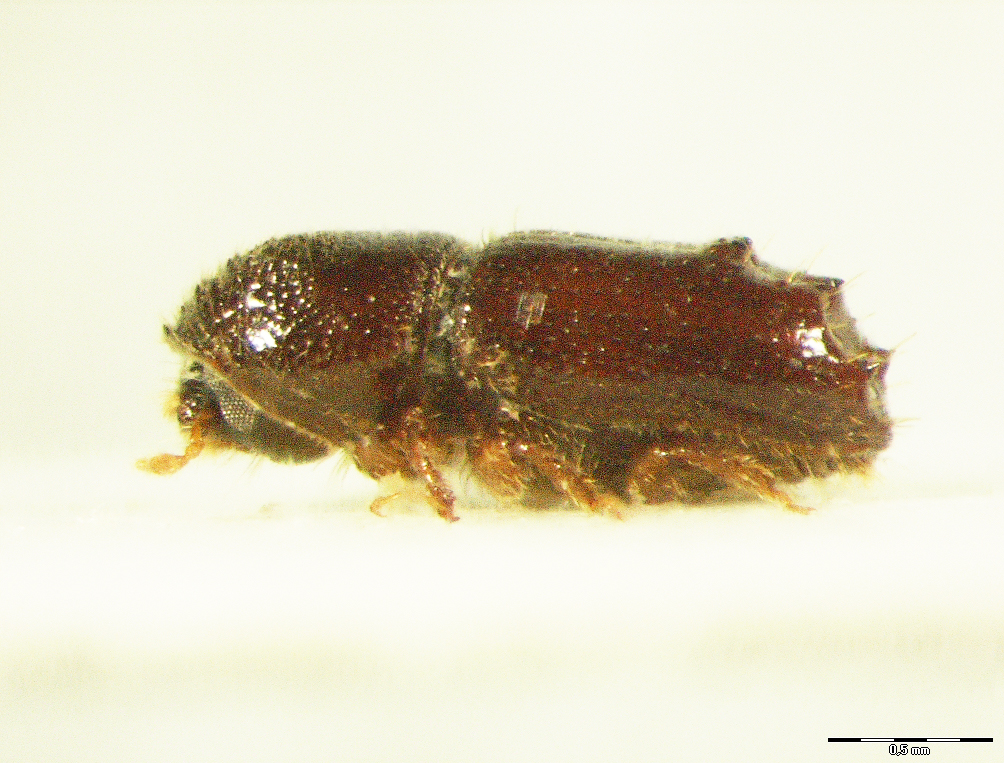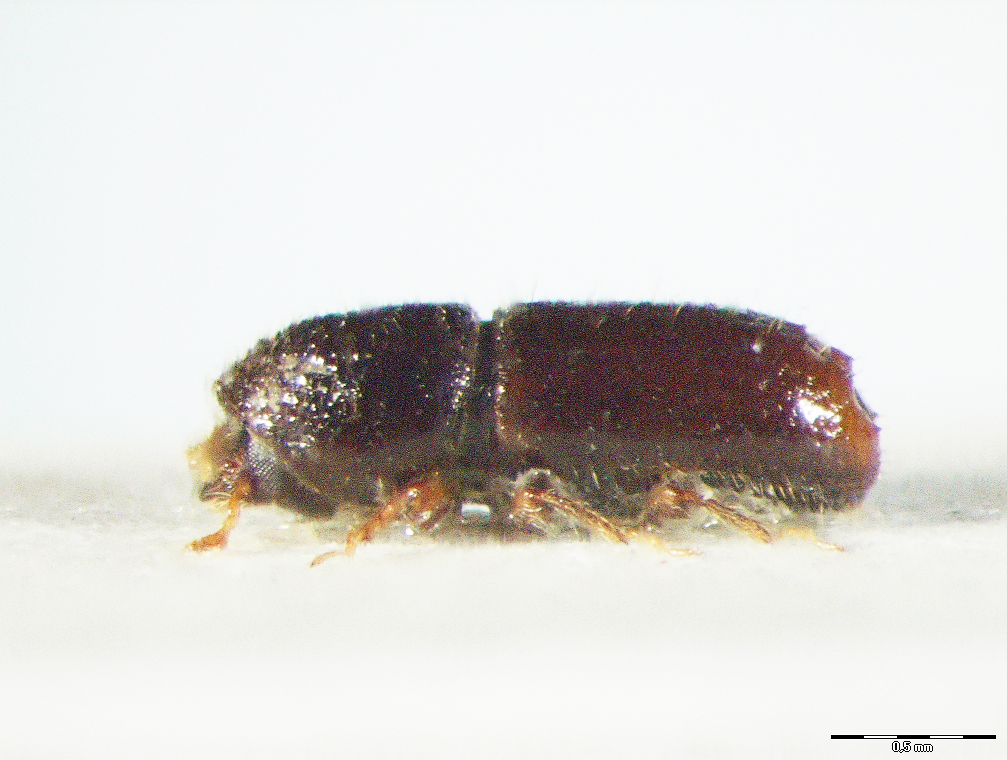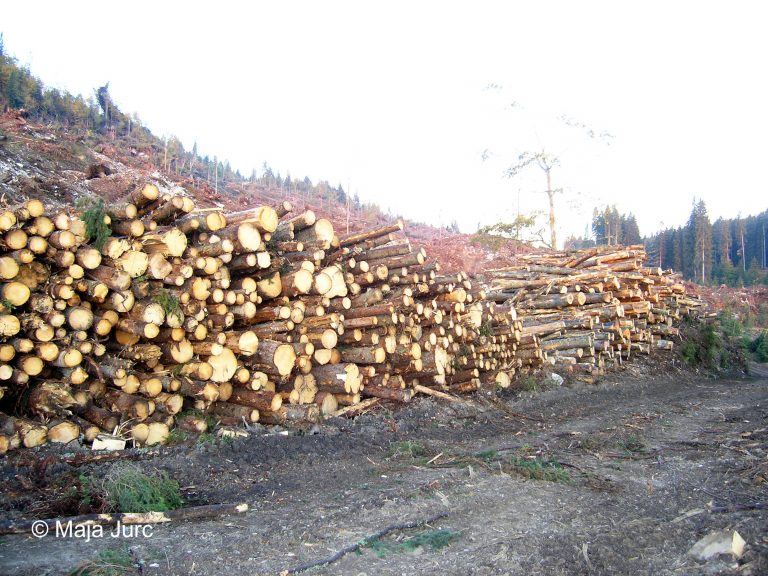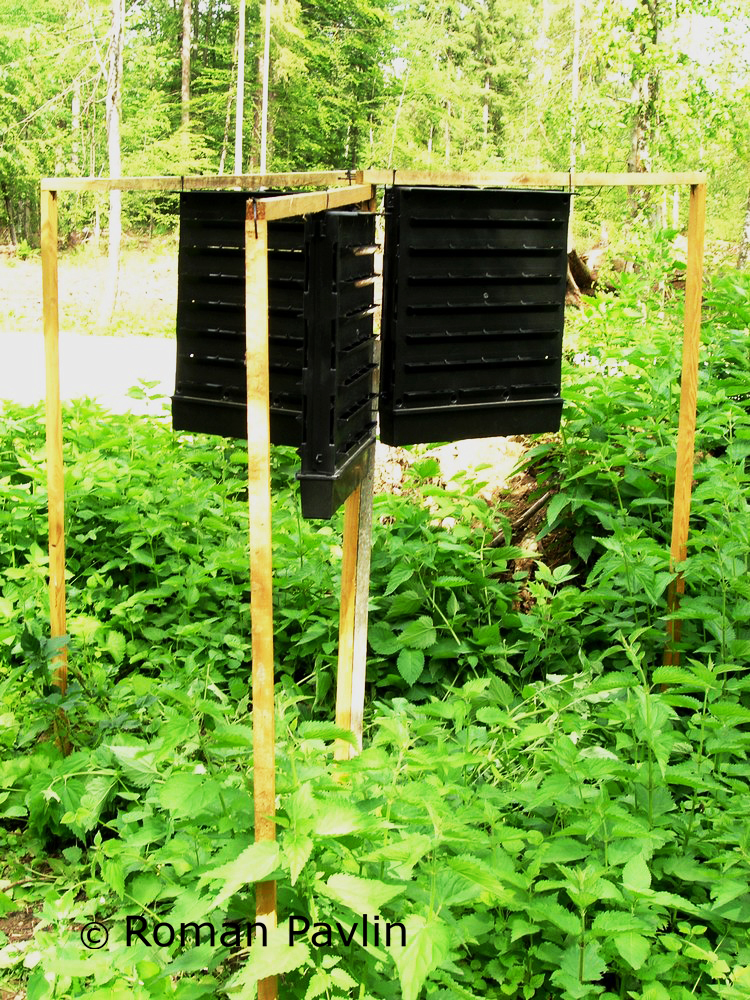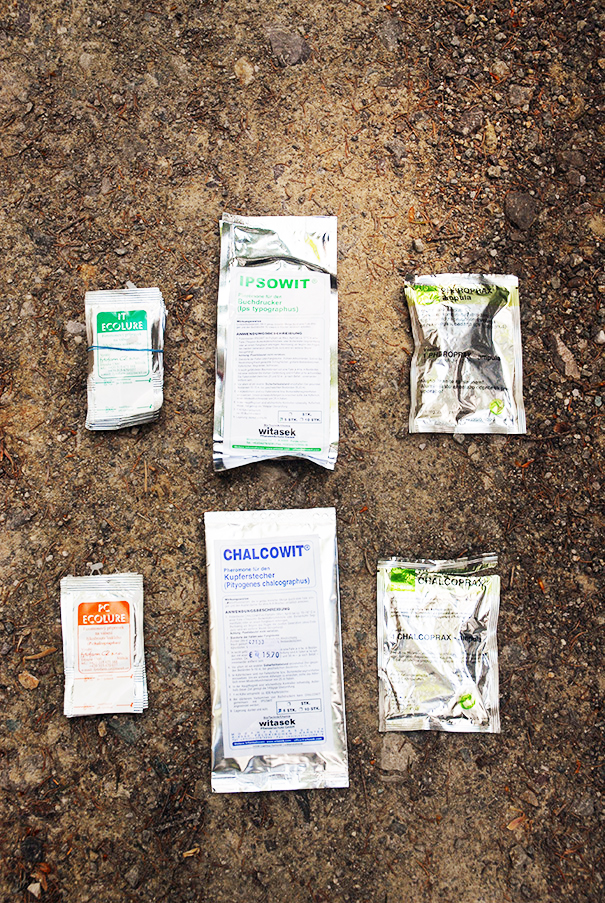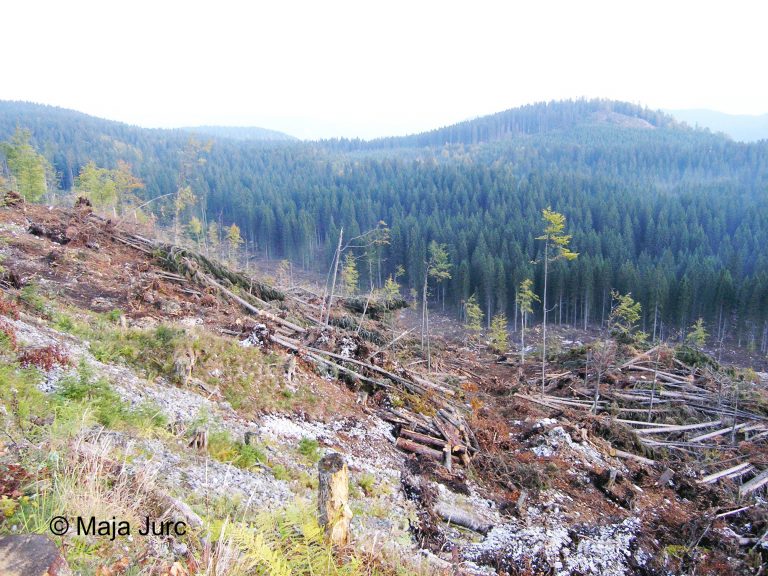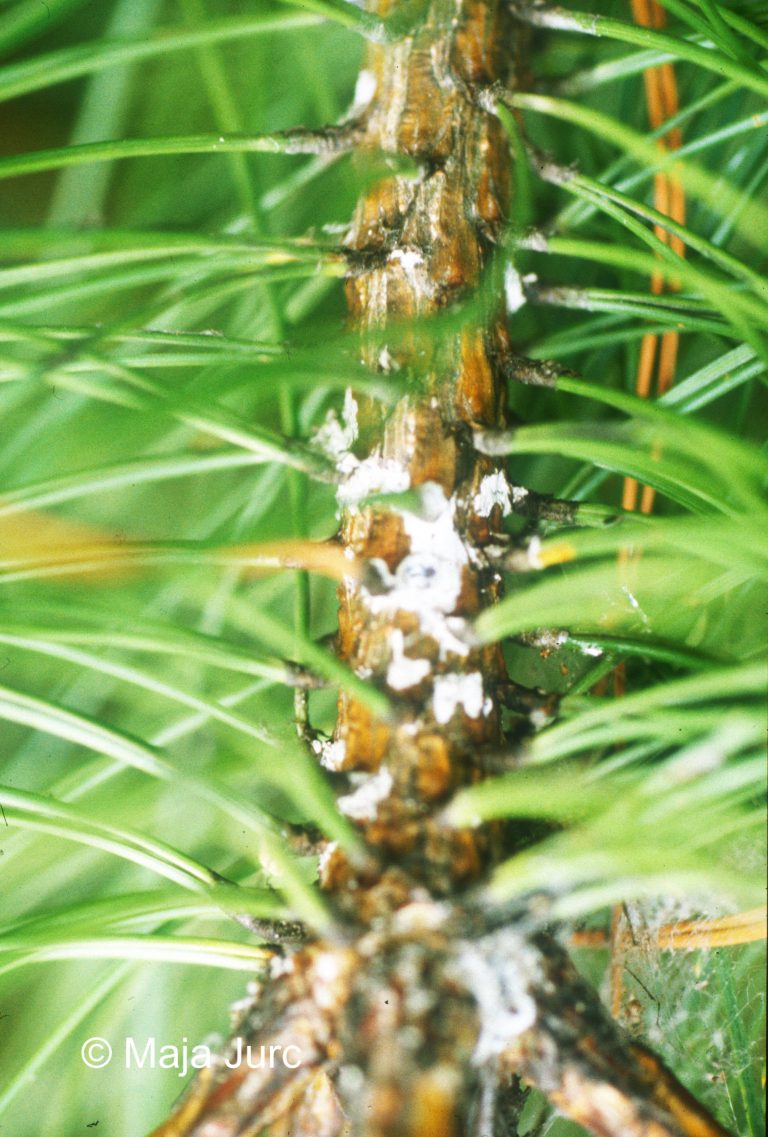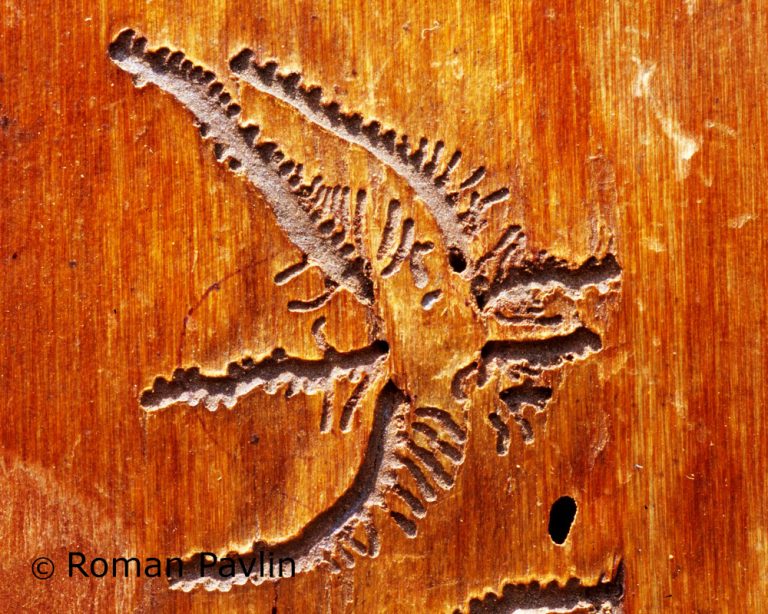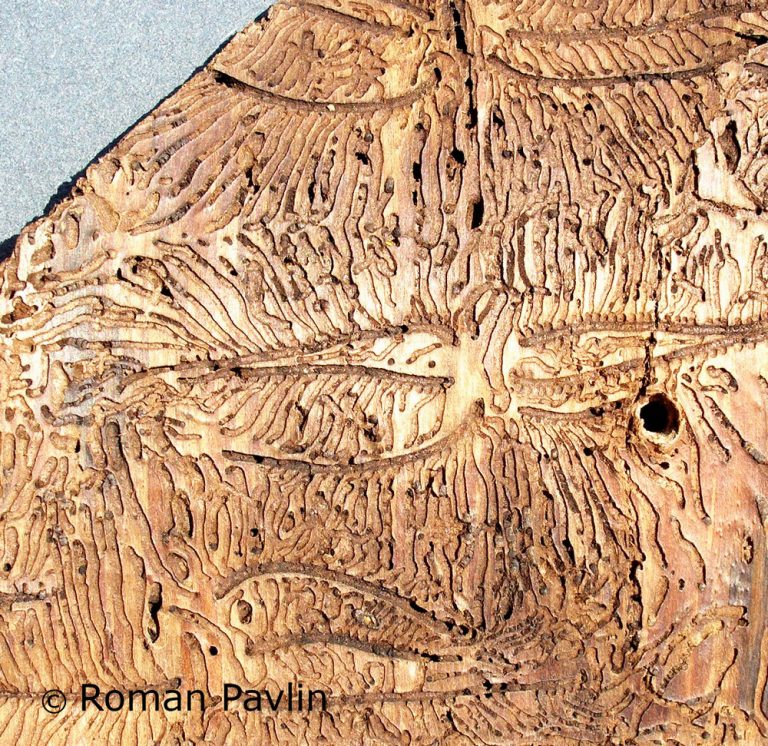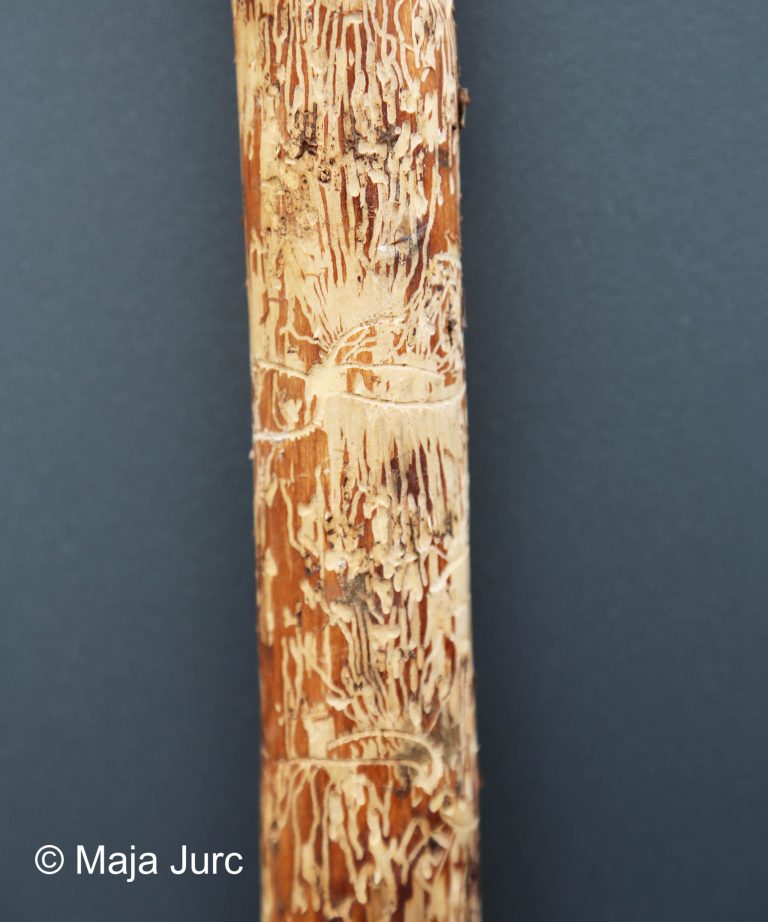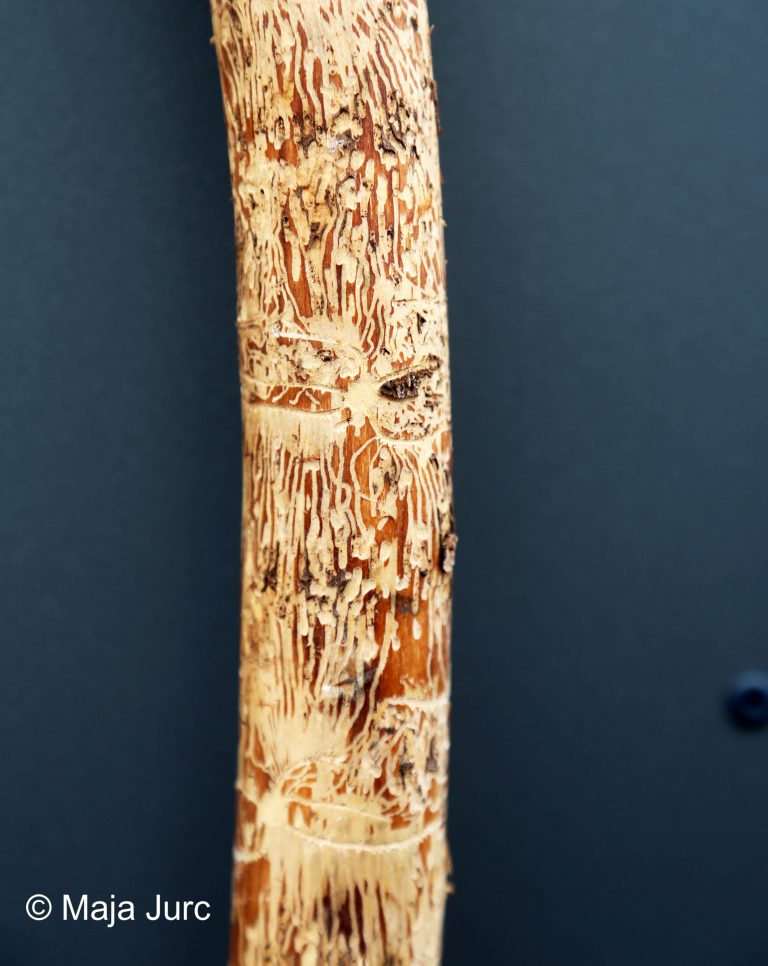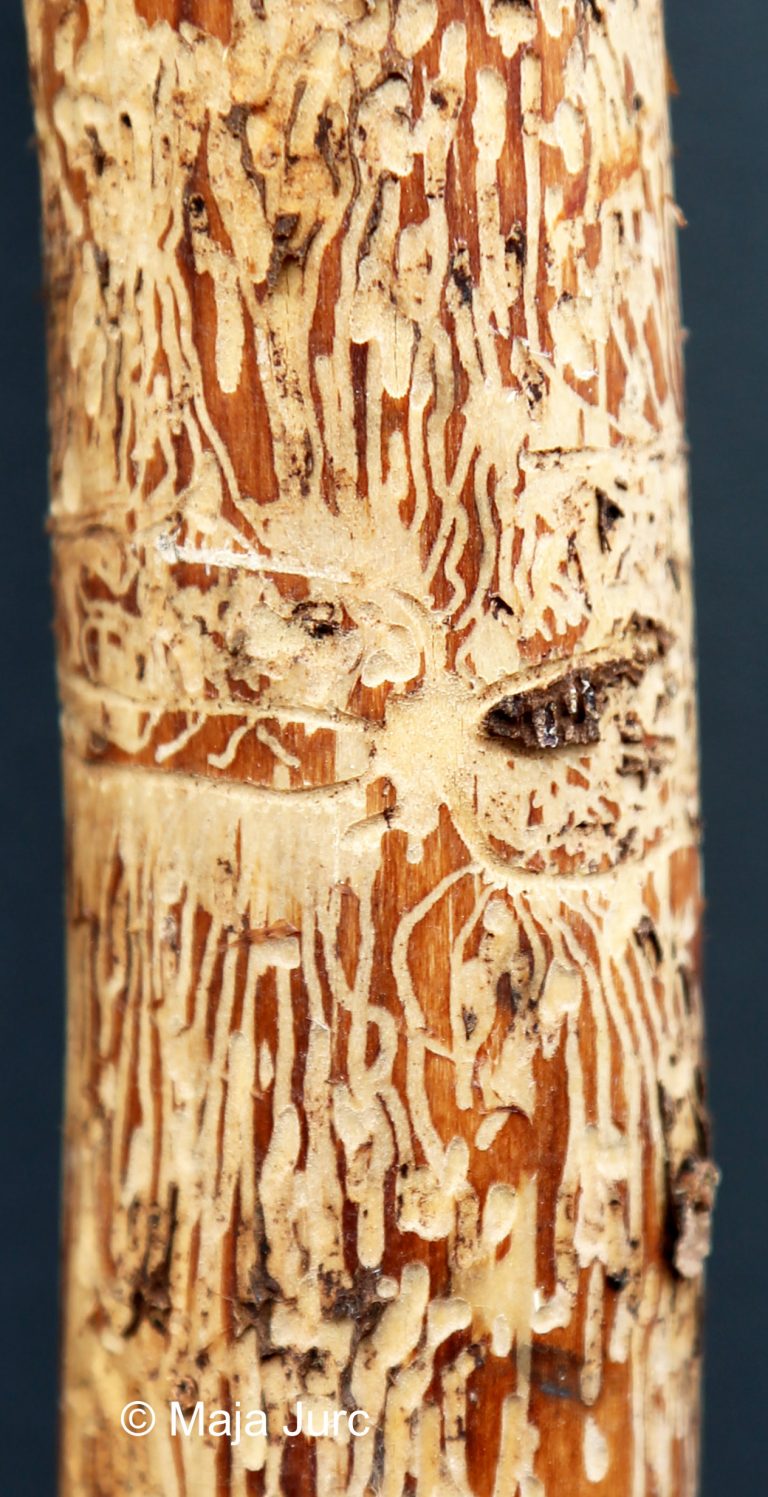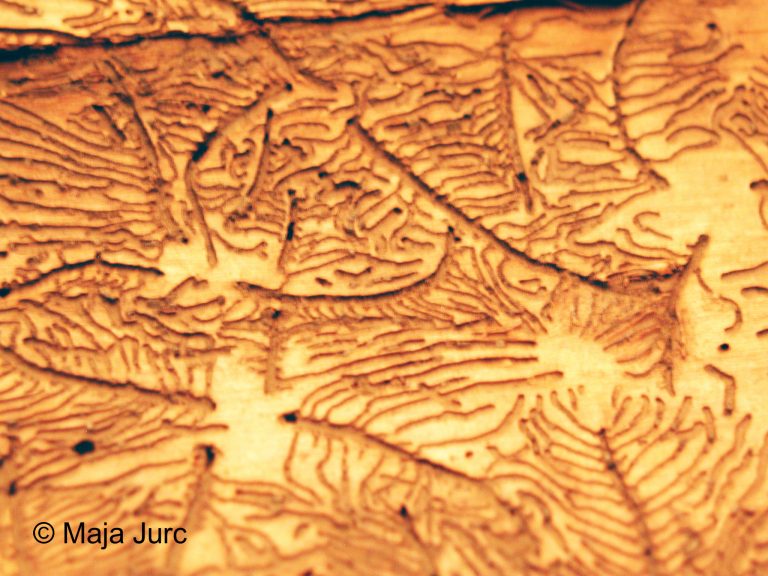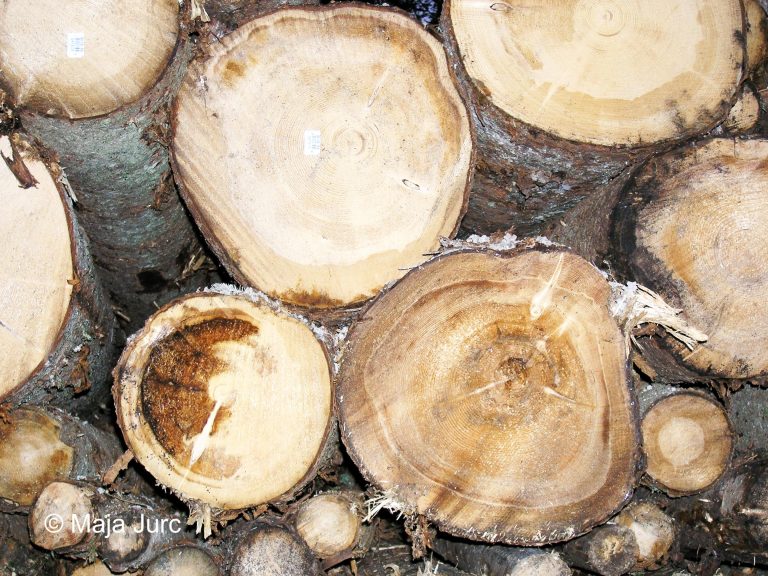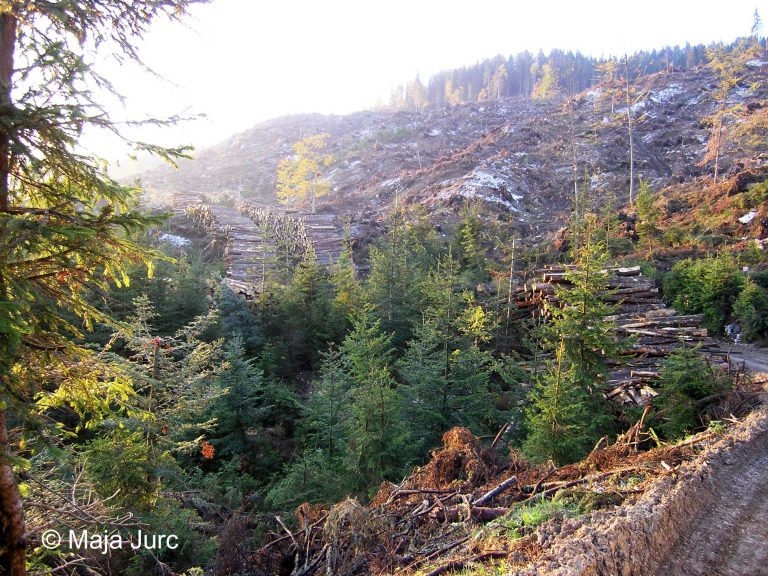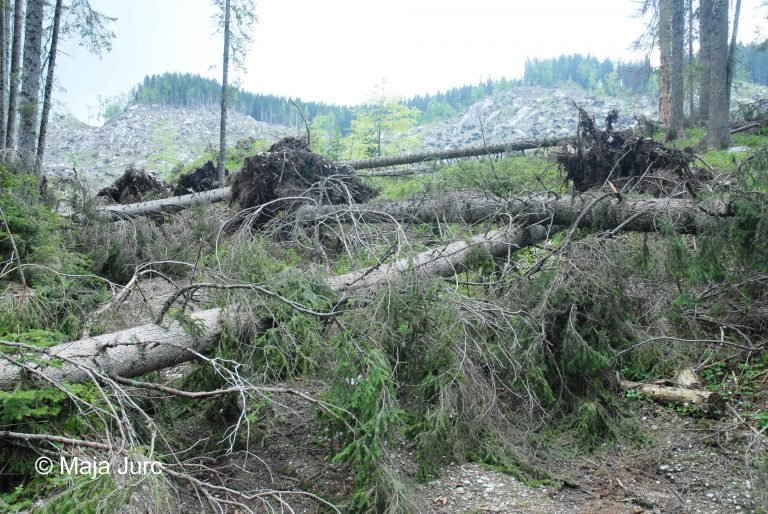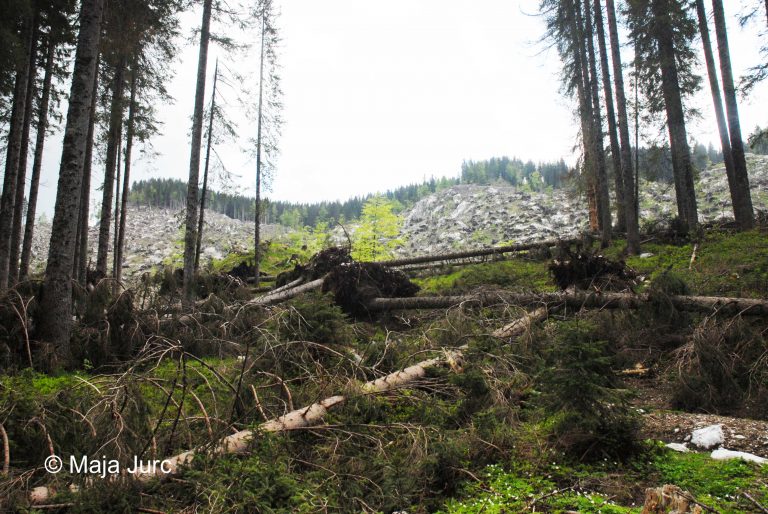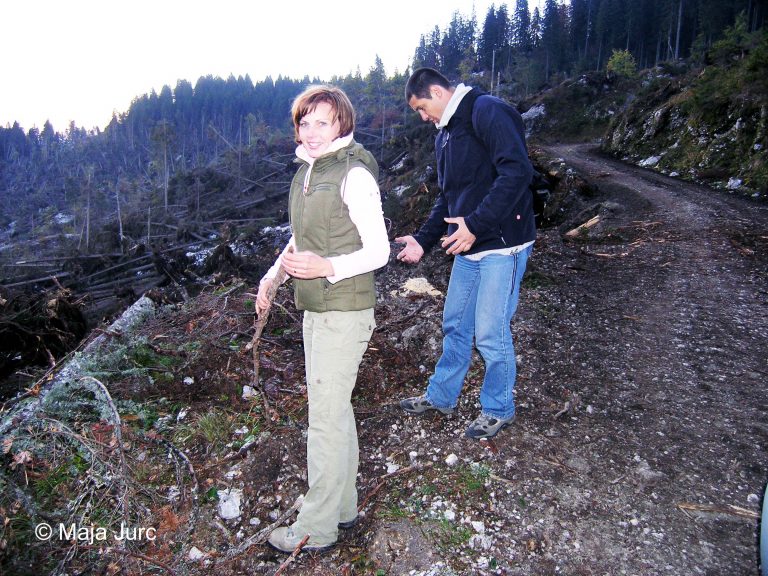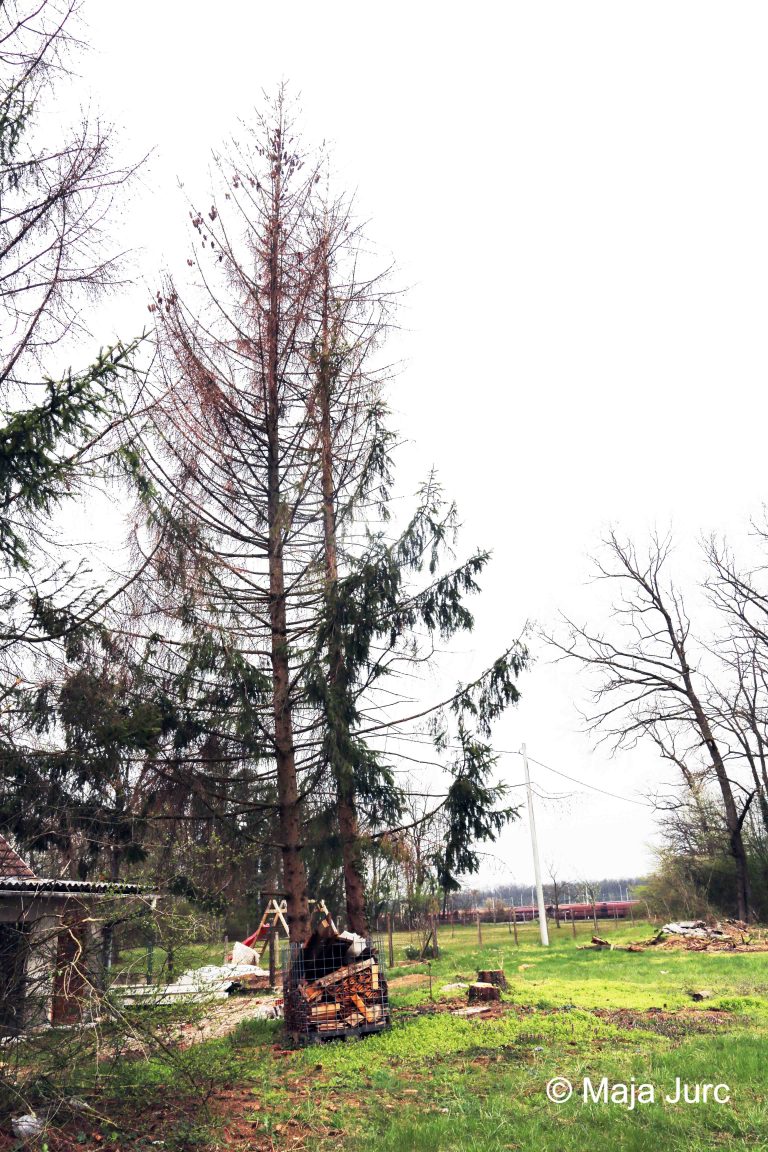30.04. Pityogenes chalcographus (Linnaeus, 1760)
Presence
E: AU BE BH BU BY CR CT CZ DE EN FI FR GB GE GR HU IC IR IT LA LS LT MC MD NR NT PL SK SL SP ST SV SZ YU
A: ES FE HEI JA JIL LIA MG NC NMO SC SCH SHA TR WS XIN
NTR
Figure 137: Pityogenes chalcographus (above: male – dorsal, lateral, below: female – dorsal, lateral) (Photo: Maja Jurc)
Older catalogs and keys – citations of name
Grüne 1979: Pityogenes chalcographus Linnaeus, 1761; Freude, Harde, Lohse 1981: P. chalcographus Linné; Titovšek 1988: P. chalcographus Linné; Pfeffer & Knížek 1993: P. chalcographus (Linnaeus, 1761); Pfeffer 1995: P. chalcographus (Linné, 1761).

Figure 138: Pityogenes chalcographus, distribution map according to historical and recent data
Ecology and presence in Slovenia
The species is found in the range of the Norway spruce in central Europe, but also occurs in northern Europe, Bosnia, Bulgaria, the Caucasus, Siberia, Korea, Japan, Africa and the Neotropics. It is very common in Slovenia, occurring in large numbers throughout the country (Figure 138). Hosts: Picea abies, P. glehnii, P. jezoensis, P. obovata, P. omorica, P. orientalis, Pinus cembra, P. densiflora, P. koraiensis, P. mugo, P. parviflora, P. peuce, P. pumila, P. rotundata, P. sibirica, P. strobus, P. sylvestris and, more rarely, Pseudotsuga menziesii, Pinus spp, Larix decidua, L. sibirica, L. gmelinii, Abies alba and A. sibirica. In Slovenia, the species has frequently been found on Picea abies, Pinus sylvestris and P. strobus, less frequently on Abies alba, Picea sitkaensis, Pinus mugo, Larix decidua and Pseudotsuga menziesii. In addition, the species was also found in nurseries on Picea omorika, P. pungens, Pinus heldreichii, P. wallichiana and Chamaecyparis lawsoniana. A polygamous species, it develops two generations per year, the first swarming in April, the second in July and August. It builds typical star-shaped tunnel systems with 3-6 maternal galleries. The brood chamber is typically entirely contained within the bark, so that the imprint on the sapwood is not visible and the maternal galleries do not appear to meet. Length (adultus) is 1.8-2.5 mm. The bevel extends to the middle of the elytra apex, on which the male has three bold denticles, approximately equidistant from each other, on either side of the apex. The female has only small humps where the denticles are and a semicircular depression on the forehead, which distinguishes it from the female of the related species P. trepanatus (Figure 137). P. chalcographus is the most economically important bark beetle on Norway spruce, along with I. typographus, and the two often occur together in gradations. P. chalcographus inhabits thin-bark parts of trees, tops, branches and trunks of younger trees. Pheromones: Chalcogran (1-Hexanol) (Francke et al. 1977; Gerken 1977).

